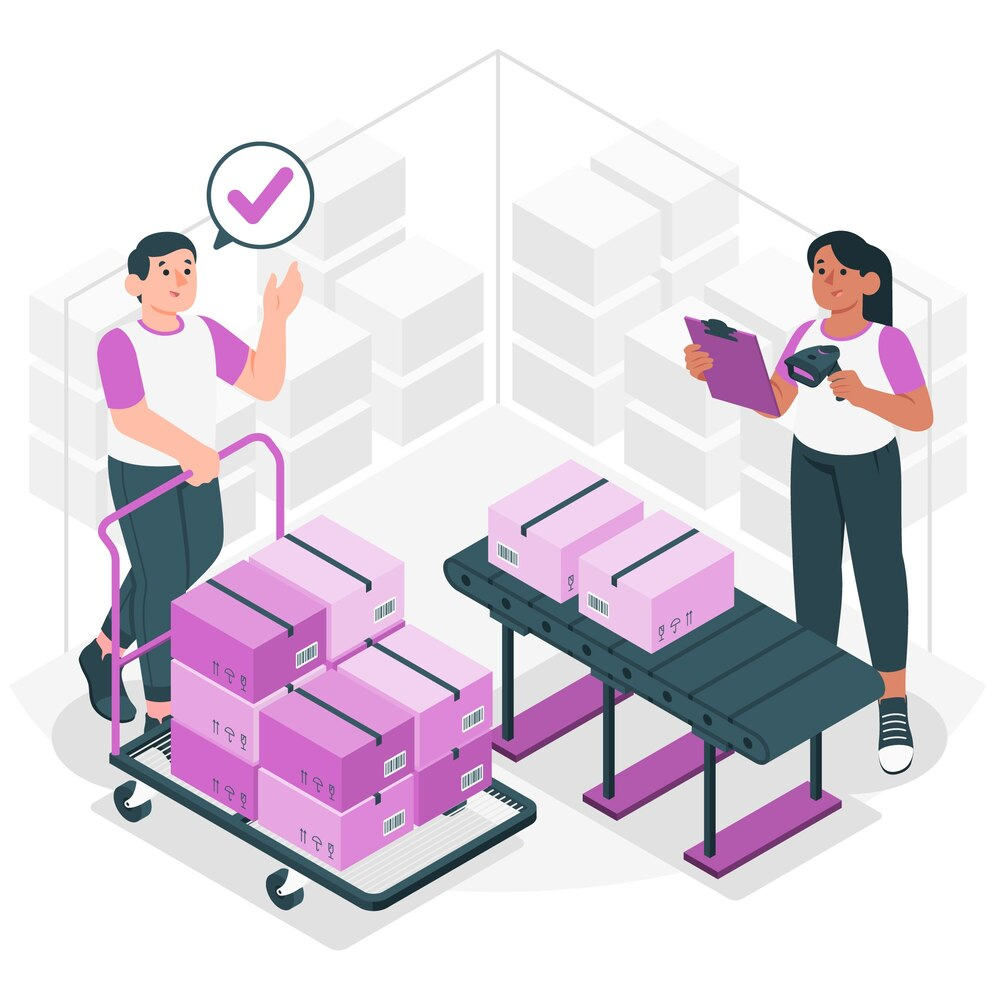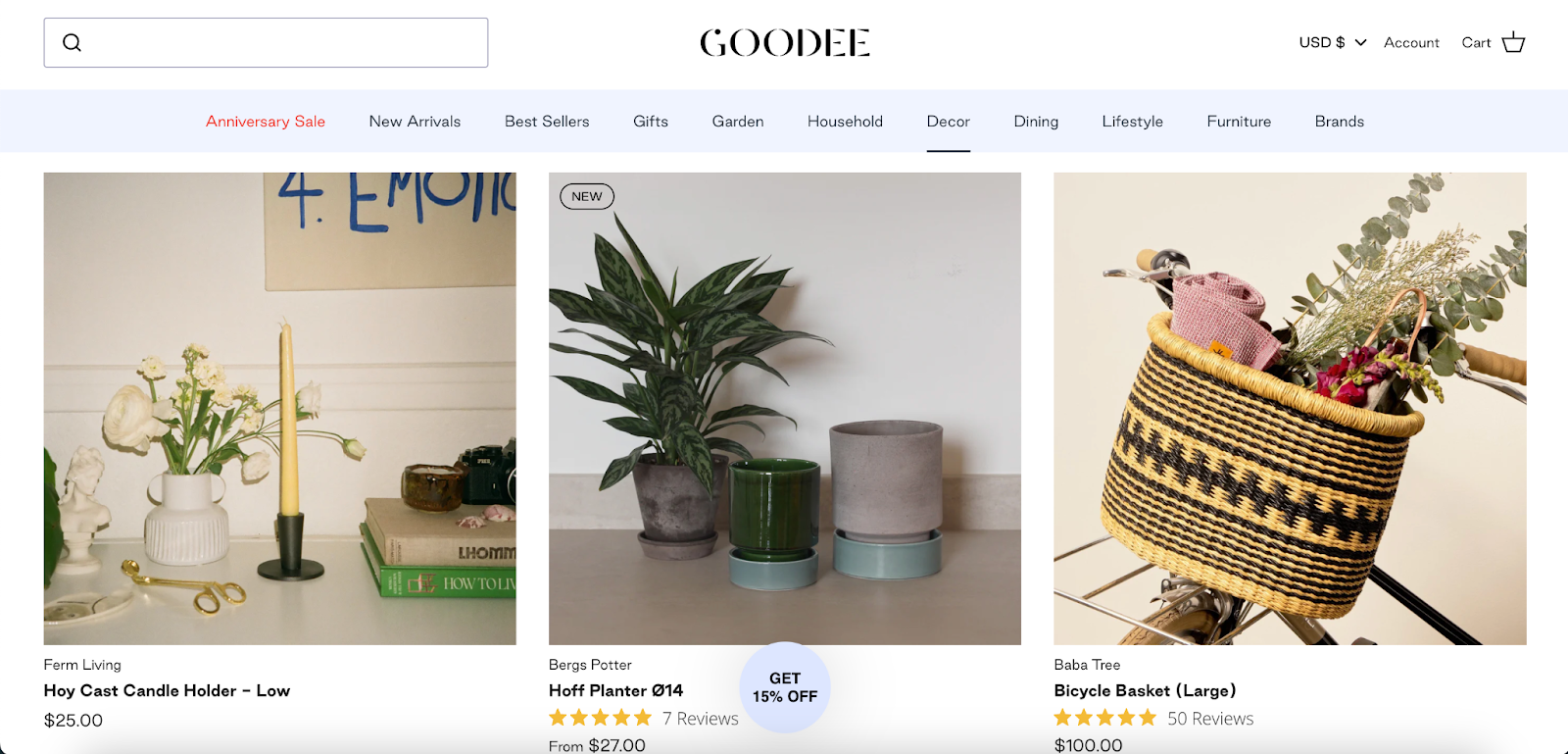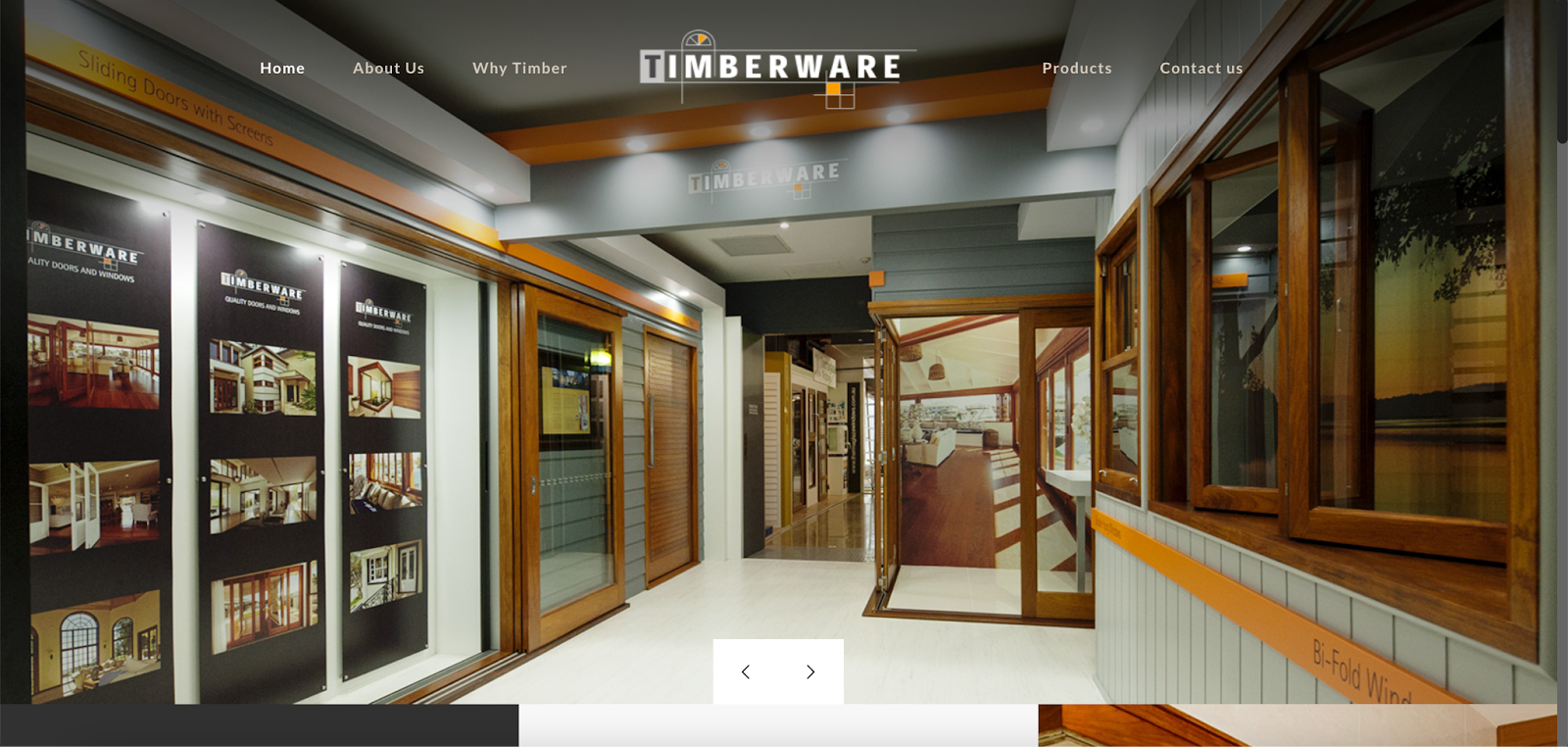How to Start a Furniture Business in 12 Simple Steps

According to Fortune Business Insights, the furniture market size was valued at $516.66 billion in 2022, with a CAGR (Compound annual growth rate) of 5.36% from 2023 to 2030. If you enjoy designing homes, working with the public, and building a profitable business profit, then a furniture store might be the right choice for you.
To get started, you can learn how to start a furniture business by following this in-depth guide. We’ve put together 12 simple steps for you to build your own furniture store. These steps will ensure that you plan well, register your new business properly, and comply with the law.
12 Steps to launch a furniture business
Step 1. Create your own business model
Starting a furniture business and selling home goods can be done in various ways, either online or in-person. The approach you take depends on factors like your skills, how much money you have to start with, and whether you have enough space to store items. Before you make a plan, let’s look at the different ways you can run your business.
-
Furniture Designer (working with a manufacturer): Instead of making the furniture yourself, you design it and then get someone else to build it for you. This still needs some special skills in designing and knowing about materials, so you can explain well to the people making the furniture.
-
Furniture Maker: This means you create furniture from scratch in your own workshop. You might make a few styles in advance to sell right away, or you could offer to make furniture based on what customers want. Doing this kind of business requires you to be good at making things, have the right tools, and have a place to work.
-
Dropshipper: This is similar to being a curator and reseller, but you don’t handle the items yourself. Instead, you work with brands that send items straight to your customers when they order. This means you don’t need to worry about storing or shipping items.
-
Curator and Reseller: Here, you gather furniture from different brands or makers and sell them together under your own brand. You don’t make the furniture, but you need to be creative in how you put everything together and make your brand look good. You buy items in bulk from other brands and send them directly to customers. To succeed, you need to know what’s popular in furniture right now.
-
Vintage Reseller: This is like being a curator and reseller, but you focus on selling unique vintage or antique pieces. It’s a bit different because you need to know a lot about the vintage market to find items that people want to buy. You might also need skills in fixing up old furniture to make it look nice again. Usually, this kind of business needs a lot of space to store items, unless you do a consignment model where you sell items on behalf of others.
Step 2. Build financial strategies for your business
The cost of starting a furniture business online varies based on the business structure you choose.
-
On the lower end: If you opt for dropshipping or a custom/made-to-order model with your own workshop, you could start with a few hundred dollars. Dropshipping doesn’t require inventory, and if you already have a workshop as a hobbyist, you can keep costs low by buying materials as needed.
-
On the higher end: Starting a maker business from scratch can be pricey, potentially costing tens of thousands of dollars for tools, equipment, workshop setup, and ongoing expenses like rent and utilities. Resale businesses also require investment for buying and storing inventory.

Starting from home is possible if you have space for storage, but consider future costs if you plan to expand to a dedicated space or partner with a warehouse.
For financing, there are options like crowdfunding, where you can get funds from potential customers before launching. Other options include bank loans, small business grants, or seeking investment from venture capital firms. Having a solid business plan increases your chances of securing funding.
Step 3. Run your furniture brand
Defining your brand early on is crucial for your furniture business. To do this, ask yourself some key questions to shape your brand story, visual style, mission, and understand your target customer better.
Once you’ve decided whether you’ll make or resell furniture, choose a specific direction for your business:
- Category/Use: Will you focus on office furniture, outdoor living, or home accents?
- Product: Are you specializing in sofa beds, dining tables, nursery items, etc.?
- Style: Do you prefer mid-century modern, minimalistic, rustic, or another style?
- Customer: Who are your target customers? Students, apartment dwellers, cottage owners, etc.?
- Niche: Are you offering “smart” furniture, modular pieces, or furniture made from recycled materials?
- Cause: Do you prioritize fair trade, locally handmade, or sustainable products?
- Price: Are you aiming for low retail/high volume or high-end/bespoke products?
Your branding exercise starts with thorough market research, considering:
- Target Customer Profile: Where do potential customers usually shop? Which social channels do they use?
- Local Market: Understand the furniture market in your area if you plan to sell locally or open a physical store.
- Competitors: Identify what makes your brand unique compared to competitors and develop a unique selling proposition.
- Trends: Stay updated on furniture design, home trends, and ecommerce design to inform your branding decisions.
After conducting market research and finding your niche, articulate your brand statement, mission, values, and promise. This lays a foundation for your brand identity. Continuously refer to these guidelines as you design your website and curate your furniture collection.
Step 4. Source furniture products
The way you find suppliers or manufacturers depends on the type of furniture business you’re starting.
For Designers
If you’re a furniture designer but not planning to manufacture the pieces yourself, look for a reliable manufacturer. Being close to your production and supply chain, especially at the beginning, helps in building strong partnerships. Look for manufacturers who allow you oversight and work with you as a business partner, especially if you’re new to manufacturing.
For Resellers
If you’re planning to resell products made by others, you can approach makers and brands directly to inquire about wholesale pricing and terms. There are also wholesale marketplaces where you can find vendors actively seeking retail partners.
For Vintage Sellers
Vintage sellers source furniture in various ways, including auctions, estate sales, online marketplaces like eBay and Facebook Marketplace, flea markets, and connecting with private collectors. Consistently staying on the lookout for inventory is essential in this business.
For Dropshippers
Furniture dropshippers can explore various dropshipping suppliers and directories like AliExpress. Some furniture brands also offer dropshipping programs, where you can set up dropshipping terms directly with them.
Step 5. Set up shop (for furniture makers)
Starting a furniture business as a maker can be expensive if you don’t already have tools or a dedicated workshop. Here are some tips for setting up your own furniture workshop:
-
Keep it tidy: A clean and organized workshop is not just safer but also more productive.
-
Plan your workflow: Think about the tools you need and how they will be used in your projects. This will help you arrange your workshop efficiently.
-
Focus on the table saw: It’s the centerpiece of your workshop, so make sure you have enough space around it for your cuts.
-
Manage dust: Think about the best way to set up ducts for efficient dust collection.
-
Illuminate properly: Invest in good lighting. LED lights are recommended for their brightness and energy efficiency.
Remember, your workshop will evolve over time. Start with what you can afford and slowly build up your tools as your business grows. Chris financed his startup with savings and reinvested profits into upgrading his workshop. Be patient and avoid stretching yourself too thin financially.
Step 6. Start furniture inventory and storage management

If you’ve chosen to make or resell furniture and you’re not dropshipping or producing items on demand, it’s crucial to consider your space requirements. This can be a significant part of your startup expenses, as mentioned in the financing section.
It has been explained that in the beginning stages, storage might be in the garage or even the bedroom. It’s a common starting point for many businesses. He emphasizes the importance of being closely involved in the entire supply chain initially for new business owners.
Once you’ve handled storage yourself, you’ll better understand what you need in a warehouse partner. Finding a partner who shares your values and commitment.
When deciding where and how to store your products, think about the condition of the space. Materials like wood and natural fabrics can be affected by extreme temperatures, pests, and changes in humidity. For instance, if you’re in a cold climate like Canada, storing inventory in an unheated garage might not be ideal long-term.
Here are some warehousing and storage options for furniture:
- Dedicate a room in your home for storage.
- Rent a climate-controlled storage unit for overflow inventory that you don’t need frequent access to.
- Partner with a warehouse that also handles shipping and order fulfillment.
- Rent or buy your own office and warehouse space for dedicated storage.
Step 7. Explore how to photograph furniture products
In the absence of fitting rooms or showrooms, online furniture businesses must replicate as much of the in-person buying process as possible. Key aspects to focus on when photographing furniture and home accents include scale and size, texture, and detail.
According to Dexter from GOODEE, photography plays a crucial role in showcasing curated brands like theirs. They aim for consistency across their website, ensuring that product images reflect the brand’s aesthetic. As a startup, you can either take your own product photos using basic equipment like a DSLR or smartphone with a lighting kit, or collaborate with a professional photographer.

Here are some photography tips for your furniture store:
-
Pay attention to scale: Besides providing detailed measurements, include images of the piece within a space alongside other familiar décor items for context.
-
Focus on details: Close-up shots help customers appreciate texture in fabric and the intricacies of wood grain.
-
Lighting matters: Proper lighting is essential for capturing accurate colors and details. You can achieve this with diffused natural light or a lighting kit.
-
Tell a story: Your visuals should go beyond the product itself and tell a story. Show how the product can be styled, what kind of space it suits, and what other products complement it. Incorporate lifestyle photos alongside plain background shots to inspire customers.
Step 8. Establish your online furniture store
Before launching your furniture business to the world, spend time familiarizing yourself with your online store builder. Launching a simple landing page at this stage, along with your social media accounts, can help you start building an email list. This list will be invaluable for making a big splash at your official grand opening.
Design and themes
When it comes to design and themes for your online furniture store, you can create a professional-looking site without any design expertise using Shopify themes. These themes offer multiple layout options that allow you to customize your site with images, text, and branding elements.
If you have the budget but lack visual skills, consider hiring a designer or agency to help you develop a branding package. Shopify experts are experienced professionals who can assist brands of all sizes.
Speaking of improving your store visual, we highly recommend using Instagram Feed to make it more attractive. Besides, this app is totally free, so give it a try!
Mageplaza Instagram Feed for Shopify
Engage visitors, build trust, and customize effortlessly. Streamline tasks and boost interaction.
Check it out!
Product pages

Product pages play a crucial role in your furniture store’s success. GOODEE’s product page design serves as an exemplary model to aspire to when setting up your store. Here are some key elements to consider implementing:
- Clear product photos with a solid background.
- Additional views of the product, including alternate angles and scenes.
- Prominent “Add to Bag” button with an option to “Add to Favorites.”
- A concise paragraph summarizing key details about the product.
- Lifestyle images showing the product in various settings.
- Detailed specifications to help customers understand the product.
- Transparency about your brand’s commitment to causes such as sustainability or fair trade practices.
- Features highlighting the maker of the product and their story.
- Customer reviews and related products sections.
- Related products section for easy comparison and cross-selling.
About, Contact, and FAQ pages
These pages allow you to share your story, brand values, and team members’ faces. Additionally, they provide important information about shipping, returns, and customer support.
When building your website, consider search engine optimization (SEO) to improve your site’s visibility on search engines like Google. This can help drive organic traffic to your site.
Ecommerce apps
To meet the specific needs of your furniture business, you can utilize ecommerce apps from the Shopify App Store, such as:
These apps can enhance your store’s functionality and improve the shopping experience for your customers.
Step 9. Expand your selling channels
Besides your online furniture store, think about expanding to additional sales channels to reach more customers in a competitive market. If you create or design furniture, consider wholesaling to reach different geographic areas. This can be an easy way to explore retail if you’re an online-only brand.
Pop-up retail is another great option for vintage furniture resellers, designers, or makers. Look into local outdoor markets or trade shows. Sometimes, larger retailers offer in-store pop-up spaces for new brands that complement their products.
Also, explore social sales channels or online marketplaces that fit your audience. As a furniture maker or vintage reseller, you can integrate your Etsy sales with Shopify, giving you both a dedicated site and access to marketplace buyers. What other websites, like home goods resellers, could you consider?
Step 10. Market your furniture business
As part of your business plan, a marketing plan outlines your marketing strategy and key channels.
There’s no universal solution for marketing furniture businesses. The goal is to deliver the right message in the right place at the right time, which depends on understanding your customers and where they spend their time. Should you invest in email marketing or Facebook ads? Is content marketing or Google Ads more effective? Experimentation is crucial at this stage.
When launching a furniture business, remember that your products reflect personal taste and may need guidance for less design-savvy customers. Content can be incredibly effective for this purpose. Build an audience on platforms like Instagram, YouTube, or TikTok by sharing home design advice and tips. These channels can drive traffic to your store and help establish your brand as a trusted expert in the field.
Step 11. Set up shipping, returns, and customer service
Shipping can be a significant challenge, especially for large items. When starting out, you might manage order fulfillment and shipping yourself. Here are some key tips to navigate this process effectively:
-
Partner with reliable shipping companies: Find a shipping company with good reviews and build a strong relationship with them. Ensure you can get quick quotes based on weight and dimensions in advance to include in your pricing.
-
Invest in quality packaging: Package or crate your products securely to ensure they arrive in perfect condition.
-
Clarify your return policy: Handling returns for oversized items can be tricky. Make your return policy clear at checkout and on product pages. If you accept returns, establish terms with your shipping partner upfront and inform customers about who will cover return shipping costs, as these can be substantial.
Step 12. Read the fine print
Before you start selling furniture online, consult with legal and insurance professionals to determine if your business needs additional protection due to the size and value of the items you’re delivering.
It’s crucial to protect yourself from losses, such as items damaged in transit. Additionally, consider safeguarding your customers. Will you offer extended warranties? Do you need commercial insurance? There are various types of business insurance, so it’s important to research and ensure you have the appropriate coverage in place before you begin selling.
The prospects of online furniture business
The shift to online shopping accelerated during the COVID-19 pandemic, and emerging technology is making it easier for furniture stores to offer an online showroom experience.
Using 3D images and videos, you can provide customers with a 360-degree view of your products or show them in motion. For instance, a video of someone sitting on a sofa can illustrate cushion firmness, which photos can’t capture.

Additionally, consider how AI tools can improve efficiency and customer experience in your furniture business. AI chatbots can handle common customer questions, such as furniture care instructions or shipping information, reducing the customer service load. Shopify Magic can simplify creating detailed product pages by generating AI-based descriptions from keywords.
Examples of successful furniture business
GOODEE

When brothers Byron and Dexter Peart, both fashion industry veterans, were planning their next venture, they thought about their childhood home, which was filled with items from their parents’ home country. They remembered that each piece had a unique story. This inspired them to create GOODEE, a furniture and home décor business that highlights and celebrates the stories of the artisans behind each product.
Timberware

“I’ve worked with my hands for as long as I can remember,” says founder Chris Hughes. Before launching Timberware, his second business, Chris worked as a welder’s apprentice and a general contractor. Building homes fostered his love for woodworking, which he now focuses on through his own business, creating custom wood furniture and home décor pieces for his clients.
Conclusion
We trust that you now have a solid understanding of how to kickstart a furniture business and can leverage the insights provided in this article. To establish your own furniture store, it’s essential to hone your skills in designing and crafting distinctive products, possess a keen understanding of your customers’ preferences, and adapt your designs to meet their requirements. However, beyond being proficient in furniture design and manufacturing, you must also master the art of business management to ensure profitability.







![Top 20+ Must-have Shopify Apps for 2025 [Free & Paid] - Mageplaza](https://cdn2.mageplaza.com/media/blog/must-have-shopify-apps/top-must-have-shopify-apps.png)
![[2025 Updates] Top 10+ Upsell Apps for Shopify - Mageplaza](https://cdn2.mageplaza.com/media/blog/best-upsell-shopify-app/cover.png)